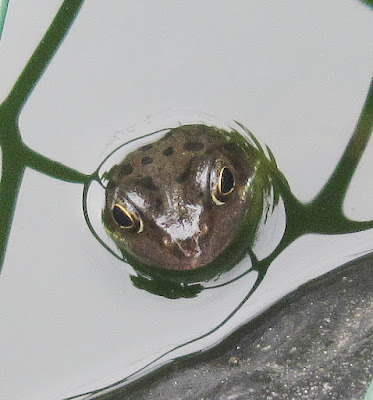The trek up Langden Brook during the week, didn't have the result I was hoping for, if only for the fact I only got to the half way point when I should have then gone on to the upper track via Holdren Castle, but had to do a 'U' turn to return via the same lower track.
Langden Valley From Holdren Castle. Pete Woodruff.
I noted 19 species including, a Nuthatch in the trees which line the road at the start of the walk, 2 Swallow were hawking over the field here, something wrong with the Swallow this year, I've personally seen little more than a double figure to date over five visits to Bowland.
Soon out on to the Langden track, 4 Stonechat were seen as a male and three juvenile, also a Common Sandpiper was on the brook with 2 Grey Wagtail seen, 4 singing male Blackcap and good number of Willow Warbler in song. I only managed to see a disappointing 3 Meadow Pipit, and 3 Raven were together soaring high overhead. Butterflies were, 6 Small Heath, 3 Small Tortoiseshell, and a Red Admiral was on a young Oak.
Common Green Grasshopper. Pete Woodruff.
Both insects were green, a Common Green Grasshopper....
....and a Green Tiger Beetle, a vicious little winged predator which can move at a speed of up to 60cm per second on bare ground, they build a burrow and ambush ground-living insects such as ants.
The Sykes Farm House Martins.
I called at Sykes Farm on my way to Langden Brook, to confirm if I still had previously granted permission to look around the buildings to check the House Martins if I called back later in the afternoon. I learned that some of the property is now privately occupied and so was out of bounds for close scrutiny.
As things turned out I wasn't able to call back, but the last time I was in the area was on 31 May 2017, when I had noted up to 45 nests around the farm complex, and established c.15 nests occupied, most of the other nests were from previous years and I saw no activity during a stake out at the rear of the property. but I did see birds flying to nest holes as I drove past on Wednesday.
Hawthornthwaite Fell.
Green Tiger Beetle. Pete Woodruff.
....and a Green Tiger Beetle, a vicious little winged predator which can move at a speed of up to 60cm per second on bare ground, they build a burrow and ambush ground-living insects such as ants.
The Sykes Farm House Martins.
I called at Sykes Farm on my way to Langden Brook, to confirm if I still had previously granted permission to look around the buildings to check the House Martins if I called back later in the afternoon. I learned that some of the property is now privately occupied and so was out of bounds for close scrutiny.
As things turned out I wasn't able to call back, but the last time I was in the area was on 31 May 2017, when I had noted up to 45 nests around the farm complex, and established c.15 nests occupied, most of the other nests were from previous years and I saw no activity during a stake out at the rear of the property. but I did see birds flying to nest holes as I drove past on Wednesday.
Hawthornthwaite Fell.
Noted on a brief visit, a male Stonechat was accompanied by a female close by, and up to 20 Sand Martin appear to have taken to a new colony, but I need to return at a later date for more detail. The Sand Martin were in pursuit of a female Merlin which took off from the ground as I made my return off the fell.
Swallowtail Moth
Ian was pleased to find a Swallowtail Moth in his garden where he got this record shot in the half light. Not a major find, but a moth quite unlike any other British species with a 'tail' on each hindwing.





















